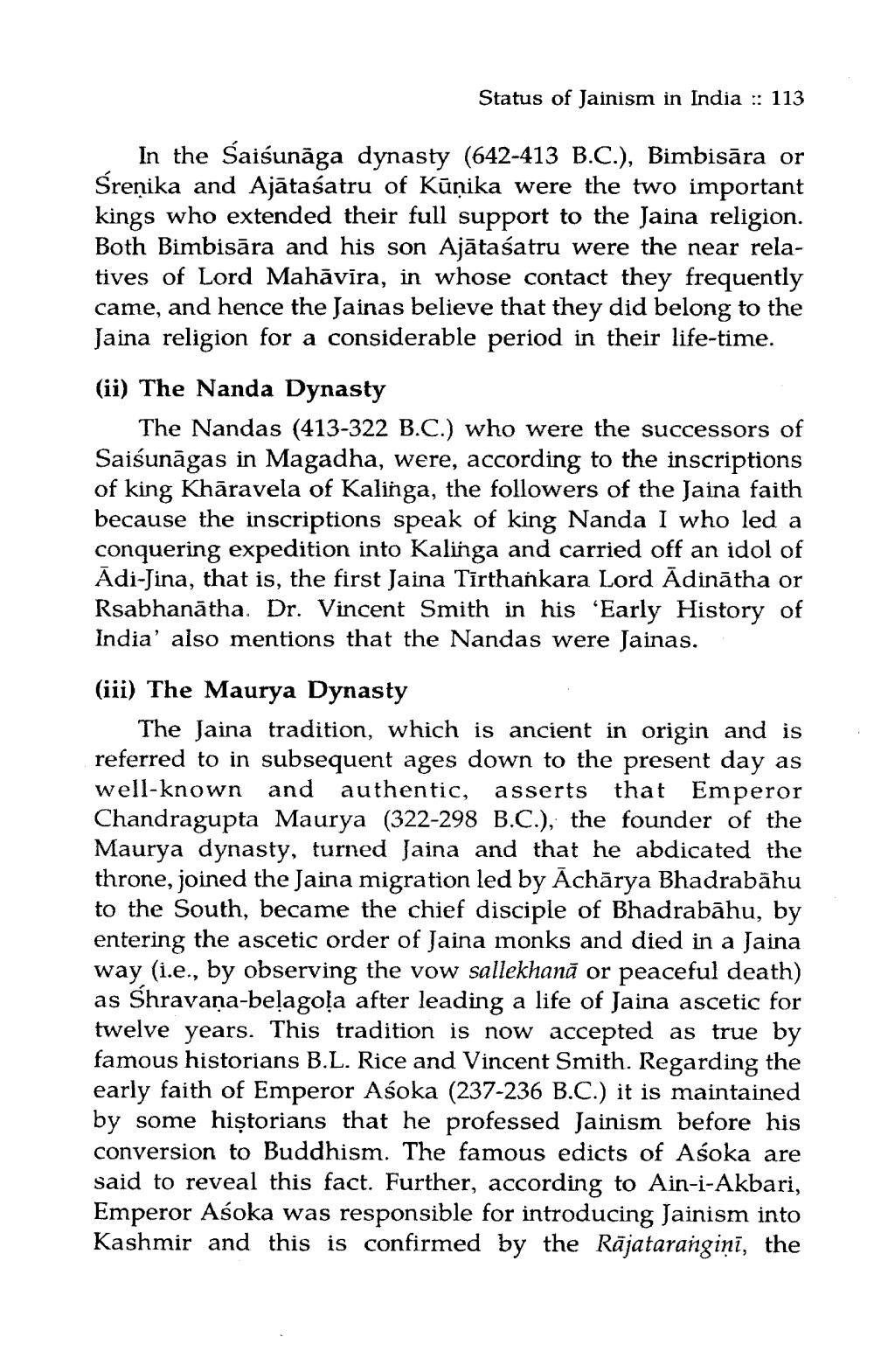________________
Status of Jainism in India :: 113
In the Saiśunāga dynasty (642-413 B.C.), Bimbisāra or Sreņika and Ajātaśatru of Kūņika were the two important kings who extended their full support to the Jaina religion. Both Bimbisāra and his son Ajātaśatru were the near relatives of Lord Mahāvira, in whose contact they frequently came, and hence the Jainas believe that they did belong to the Jaina religion for a considerable period in their life-time. (ii) The Nanda Dynasty
The Nandas (413-322 B.C.) who were the successors of Saisunāgas in Magadha, were, according to the inscriptions of king Khāravela of Kalinga, the followers of the Jaina faith because the inscriptions speak of king Nanda I who led a conquering expedition into Kalinga and carried off an idol of Adi-Jina, that is, the first Jaina Tīrthankara Lord Ādinātha or Rsabhanātha. Dr. Vincent Smith in his 'Early History of India’ also mentions that the Nandas were Jainas.
(iii) The Maurya Dynasty
The Jaina tradition, which is ancient in origin and is referred to in subsequent ages down to the present day as well-known and authentic, asserts that Emperor Chandragupta Maurya (322-298 B.C.), the founder of the Maurya dynasty, turned Jaina and that he abdicated the throne, joined the Jaina migration led by Āchārya Bhadrabāhu to the South, became the chief disciple of Bhadrabāhu, by entering the ascetic order of Jaina monks and died in a Jaina way (i.e., by observing the vow sallekhanā or peaceful death) as Shravana-belagola after leading a life of Jaina ascetic for twelve years. This tradition is now accepted as true by famous historians B.L. Rice and Vincent Smith. Regarding the early faith of Emperor Asoka (237-236 B.C.) it is maintained by some historians that he professed Jainism before his conversion to Buddhism. The famous edicts of Asoka are said to reveal this fact. Further, according to Ain-i-Akbari, Emperor Asoka was responsible for introducing Jainism into Kashmir and this is confirmed by the Rājatarangini, the




